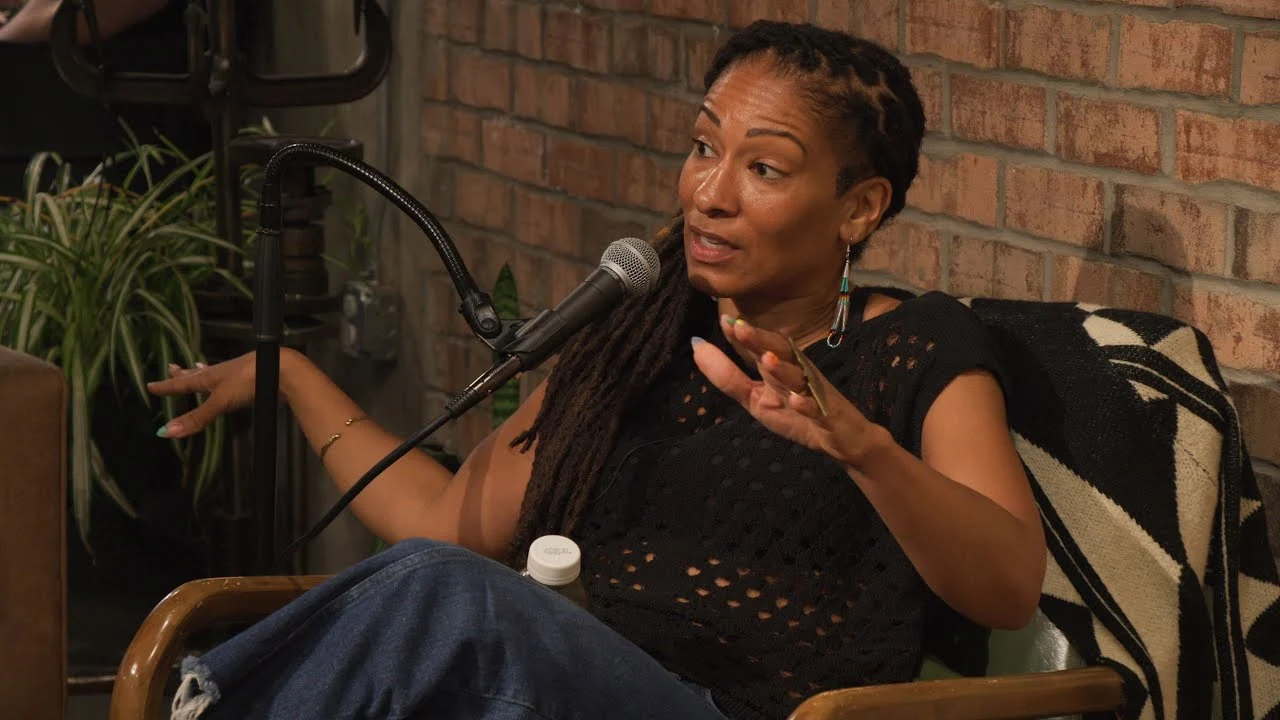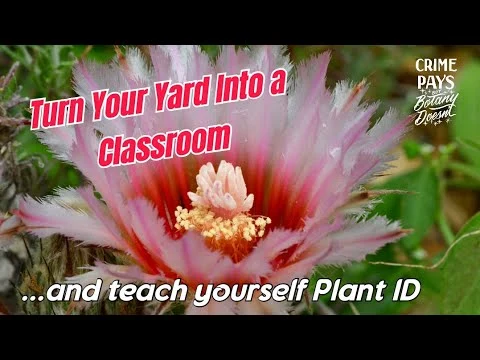
On the post image, Knowing Animals Podcast: Episode 58: Animal Rights in Palestine and Israel with Esther Alloun
This episode of Knowing Animals features Esther Alloun from the University of Wollongong. We discuss her article ‘’That’s the beauty of it, it’s very simple!’ Animal rights and settler colonialism in Palestine–Israel’ which appeared in the journal Settler Colonial Studies in December 2017.

Source with pictures of example soft landing gardens, plant lists tailored to the North American Eastern Temperate Forests can be found:
https://www.pollinatorsnativeplants.com/softlandings.html
---
Oaks are universally the top keystone trees that support moths and butterflies. Across the United States, more than 940 types of caterpillars feed on oaks (Quercus).
Top genera: Oak, Willow, Cherry, Pines, Poplar
Lepidoptera in image: Great oak dagger moth, Luna moth, Red-banded hairstreak, Eastern buck moth
---
Many of the moths and butterflies that feed on oak trees must complete their life cycles in the duff and leaf litter (i.e., soft landings) near or beneath the tree, or below ground.
Lepidoptera in image: Blinded sphinx moth, Juvenal's duskywing, Hog moth
---
Creating soft landings under the dripline of oaks (as well as any other tree) invites all kinds of beneficial insects to complete their life cycles in your yard.
A number of beneficial insects such as fireflies, bumble bees, beetles, and lacewings need soft landings to survive.
Lepidoptera in image: Edwards hairstreak, Skiff moth, Pink-striped oakworm
---
Planting intentional soft landings under keystone trees builds healthy soil, provides food for songbirds and pollinators, sequesters more carbon than turf grass, and reduces time spent mowing.
Other ways to support insects that spend a phase of their life cycle beneath trees include eliminating landscape fabric and decreasing mowing to reduce soil compaction.
---
DON'T FORGET TO LEAVE THE LEAVES UNDER YOUR TREES!
>Over the centuries, physicians have placed migraine in various positions along the mind / body spectrum. Headache experts currently consider migraine a somatic disorder rooted in the brain. But this is a break from the past. Up until thirty years ago, doctors primarily viewed migraine as having both a psychological and a somatic basis. In what follows, I trace these historical understandings of migraine from the nineteenth-century understanding of migraine as a disorder of upper-class intellectuals, to the influential concept of the “migraine personality” in mid-twentieth-century America, and finally to contemporary theories of comorbidity.
[...]
>I pay close attention to how, at each historical turn, biomedical discourses come to enact and reinforce cultural narratives about gender, class, and pain via the encoded inclusion of moral character. After all, the credibility and the legitimacy of a disorder — and how much we, as a society, choose to invest in its treatment — is intimately tied to how we perceive the moral character of the patient.
Mr. Trash Wheel is pretty cool:
>FreeSewing is open source software to generate bespoke sewing patterns, loved by home sewers and fashion entrepreneurs alike.
Mastodon instance: FreeSewing.social
Do y'all have a community for socialism on this instance? I miss the veganarchism subreddit so much :(
With the increased interest in upcycling, visible mending has become a popular way to avoid sending worn or torn items to a landfill. There are many ways to incorporate visible mending into your own life, and just as many crafting techniques can be used to fix snags, holes, and even cover up stains ...

The local cottontail raised her litter in my yard and the family didn't care for them, other than using them as a hangout spot. They did eat all the Virginia spiderwort and there's a bunch of violet stems around with no leaves, but mostly they stick to the plantains (Plantago sp.) in the lawn.
I had no idea deer lived in the city until I started doing this. Sometimes I'll catch one sleeping in my backyard which is a surreal sight. They munched the sunchokes, hazelnut, and chokeberry to the ground, but all are bouncing back.
Most of the flowers are divisions of plants, some volunteers and others I got as plugs in summer 2022. I decided to start small and expand over time. The coneflower was four plants last spring which I divided into 12, then into about 30 this spring. Rose milkweed and late boneset are just as prolific.
I have spread some seeds around and others have blown in. The groundcover in the second photo is all volunteer.
The mulch was leftover from a chipdrop. I used it to make the beds look "intentional" when everything was sparse and muddy back in February :) The plan is for everything to grow so dense that I won't need to mulch it again.

Huffin' the flowers has been a huge stress relief here in the Southeastern USA Plains.
The shrub on the right is buttonbush (Cephalanthus occidentalis). Flowers are: orange coneflower (Rudbeckia 'goldsturm'), sweet Joe-Pye (Eutrochium purpureum), anise hyssop (Agastache foeniculum), pokeberry (Phytolacca americana), and catmint (Nepeta × faassenii).
Closer to the ground there's: wood sorrel (Oxalis sp.), three seeded mercury (Acalypha rhomboidea) and blue violets (Viola sororia). The empty space has wild stawberry (Fragaria virginiana) slowly creeping and a young little bluestem (Schizachyrium scoparium).
The image below shows the opening of the rain garden where the runoff enters. Plants are 4 - 5 inches max. Here there's: Virginia pepper (Lepidium virginicum), blue violet (Viola sororia), wood sorrel (Oxalis sp.), nimblewill (Muhlenbergia schreberi), prostrate spurge? (Euphorbia sp.).
Also seen: white clover, creeping cinquefoil, and Bermuda grass.
Around here, it's spotted lanternflies. The almost glee some have for squashing them is disheartening. I get why they do it, believe me, but I've encountered little to no zoomed out perspective that these little dudes didn't choose to be here.
To really go off the deep end... the spotted lanternfly's favorite tree, Ailanthus altissima, is just trying to do what its ancestors have done for millennia. Not saying these trees shouldn't be removed, but they also didn't choose to be here.
Of these things we speak venom and deem trash. Though, this attitude seems pervasive in how western culture treats the other in general.
They don’t want most of the crap people plant trying to be Eco friendly anyways or so the landscape architect told me.
The research of entomologist, Dr. Doug Tallamy, and his team at the University of Delaware have identified 14% of native plants (the keystones) support 90% of butterfly and moth lepidoptera species. The research of horticulturist Jarrod Fowler has shown that 15% to 60% of North American native bee species are pollen specialists who only eat pollen from 40% of native plants.
Dense plantings help keep it at bay. For flowers and grasses, cut in half the recommended plant spacing that you'll find on gardening sites.
I have orange coneflower bordering a pocket prairie, planted one foot apart (center of plant to center of plant). Bermuda grass grows around the edge, but rarely enters it.
Dan Fischer Let Nature Play A Possible Pathway of Total Liberation and Earth Restoration April 2022

>In short, this is a proposal for an abolition of compulsory work for all beings. It involves rewilding at least 75% of the Earth with guidance from local and Indigenous communities, and ensuring that the remainder of the planet “abolish[es] the wage system, and live[s] in harmony with the Earth” as proposed by the Industrial Workers of the World (IWW) (2021).
I don't mind teaming up if you're still interested, it'd be nice to have some help.
Neat! No problem, thank y'all for all you do :)
I'd like to help with !nolawns@slrpnk.net

YouTube Video
Click to view this content.
>n her 2016 Edward W. Said lecture, Naomi Klein examines how Said's ideas of racial hierarchy, including Orientalism, have been the silent partners to climate change since the earliest days of the steam engine, continuing to present day decisions to let entire nations drown and others warm to lethal levels. The lecture looks at how Said’s bold universalist vision might form the basis for a response to climate change grounded in radical inclusion, belonging and restorative justice.
Do you mean the fun stuff like soy curls and doing lines of nooch? Mimicking the gluttonous delights of Thee Burger Dude?
I grew up on concrete with streets peppered by exotic callery pear and feral pigeons. It wasn't until a friend moved to a neighborhood with big yards (for the city, anyway) that I saw cardinals, bluejays, cottontails, foxes, and nights lit up by fireflies.
I live close to that neighborhood now and the streets here are lined with willow oak, black cherry, and sycamore. So many woodland creatures and cool bugs, some of which are recorded on iNat.
But go a mile south to a redlined neighborhood and the canopy is sparse to none. The streets are lined with empty tree wells, usually sloppily paved over. Some years ago, the police installed bright white spotlights and surveillance cameras. Absolutely brutal stuff.

YouTube Video
Click to view this content.
>Join Iowa attorney and business professor Rosanne Plante as she explains what to do if the “Weed Police” knock on your door! > >Most towns, cities, and other municipalities have weed ordinances (local law) concerning what is a weed, what is not defined as a weed in their jurisdiction, and what is allowed to be grown on the property of local citizens. How do you know if you are really in violation, or if your “flowers” just remind others of weeds? > >Rosanne presents a handy checklist to use if you are ever accused of breaking a weed ordinance. Many times, citizens are not in violation at all, but can use the citation or threat of a citation as a teaching moment for local government officials. > >As a past city attorney herself, Rosanne has extensive experience not only drafting city ordinances of all kinds but also prosecuting offenders. She truly knows what is needed to “prove up” a weed violation. > >Download a Sample Native Planting Ordinance: https://wildones.org/resources/
Places like Maryland did away with that nonsense. It is possible if neighbors are willing to come together and fight for it.
You've convinced me 👩🌾 the bees were all over them so there's dozens of future fruits growing. I think these are at least two different species/hybrids given the variance in flower form and coloration. I'll be neat if they taste different, too!
The pads are what I really want to try... the new growth looked so yummy lol. I read they taste like a mix of green beans and okra. Sounds delish.

YouTube Video
Click to view this content.
>In this episode we film more habitat destruction in South Texas, this time for the purposes of grazing cattle in a desert. > >Echinocereus enneacanthus, Coryphantha macromeris runyonii, Ancistrocactus scheeri and others are prevented from being destroyed in this act of senseless bulldozing. Ecotourism possibilities abound here due to the presence of numerous rare birds and cactus species and an abundance of winter texans that would happily pay to see and protect this land, but ranching and cattle are the convention here, and human beings rarely break with convention unless forced to by unforeseen circumstances which are sure to arrrive to the region, eventually.
Watching them flutter around the milkweed, over to my neighbor's flowers, across the street and back again was beautiful. It was amazing to see one in person. They're much larger than I imagined and very graceful.

Monarch on rose milkweed, Asclepias incarnata.
I dug this out myself, roughly 6 feet in diameter and 4 inches deep. Given how fast everything is growing and self-seeding, I'll be able to expand closer to the street next year.
Southeastern USA Plains. This is the last stop for rainwater before the storm drain leading to the Chesapeake Bay.
Closing a herbarium during the sixth mass extinction 🤡

This is in the Southeastern USA Plains.
The mature plants (seen on the left side) went to seed in the fall. I broke apart the seed heads over the right side in February.

YouTube Video
Click to view this content.
>In this revelatory work, Ruha Benjamin calls on us to take imagination seriously as a site of struggle and a place of possibility for reshaping the future. > >A world without prisons? Ridiculous. Schools that foster the genius of every child? Impossible. Work that doesn’t strangle the life out of people? Naive. A society where everyone has food, shelter, love? In your dreams. Exactly. Ruha Benjamin, Princeton University professor, insists that imagination isn’t a luxury. It is a vital resource and powerful tool for collective liberation. Imagination: A Manifesto is her proclamation that we have the power to use our imaginations to challenge systems of oppression and to create a world in which everyone can thrive. But obstacles abound. We have inherited destructive ideas that trap us inside a dominant imagination. Consider how racism, sexism, and classism make hierarchies, exploitation, and violence seem natural and inevitable—but all emerged from the human imagination. The most effective way to disrupt these deadly systems is to do so collectively. Benjamin highlights the educators, artists, activists, and many others who are refuting powerful narratives that justify the status quo, crafting new stories that reflect our interconnection, and offering creative approaches to seemingly intractable problems. Imagination: A Manifesto offers visionary examples and tactics to push beyond the constraints of what we think, and are told, is possible. This book is for anyone who is ready to take to heart Toni Morrison’s instruction: “Dream a little before you think.”
Abstract
Critiques of intersectionality as an additive and simplistic model of understanding identity politics has led to calls for renewed concepts that better grasp the complexity and potential of shared struggle. In this article, we contend that the experiences of activists attempting to practice an intersectional human and animal rights politics are a crucial yet overlooked resource in the development of such conceptual imaginaries and ethical practice. Drawing on an historical case study conducted with activists involved in the 1990s anarchist collective ‘One Struggle’ in Israel/Palestine, we argue that an ethic of shared human and animal rights struggle cannot be separated from place-based and embodied politics. We show that activists cultivating intersectional politics in practice must negotiate affective forces of discomfort, alienation and exhaustion that wear down and constrain the potential for intersectional coalitions and joint struggles. These affects are generated through state disincentives, violence the cultural politics of nationalism and incommensurable differences. In this context, intersectional politics are a precarious achievement, dependent on the capacities of activists to continue to compromise and negotiate affectively charged encounters in everyday settings. To better capture the precarious, contingent and provisional nature of animal and human rights activism, we therefore propose the concept of ‘actually existing intersectionality’, illustrating how intersectionality is retheorised via emplaced, embodied activist practices. In so doing we make visible the work through which intersectional politics coheres through negotiation by actors in particular places and times.

So many flower buds!
This is full sun between a brick wall and concrete pathway. Sandy clay, soil is wet in the winter and turns into pottery during the summer. What was four pads four years ago now covers 6 sq feet! Doesn't get much higher than a foot tall and edible.
Here's some flowers from last June:
Eastern Prickly Pear, Opuntia humifusa, is native to Eastern North America. Best for people who enjoy playing the game operation!
Laura Schleifer & Dan Fischer Animal Liberation is Climate Justice Struggles and Strategies from Below Winter 2022

Original on New Politics, Winter 2022
>Although the UN released a special report two years ago stressing that one of the most effective ways to mitigate warming is a plant-based diet,[4] not one day of COP26 was devoted to the issue, in stark contrast to the time dedicated to energy, transport, and finance. Even as protests outside the conference called attention to this issue, the delegates inside ignored it. > >One reason cited for the omission was that addressing animal agriculture would unfairly target historically oppressed communities, continuing the Global North’s legacy of dominating and controlling those they’ve colonized.[5] While this may seem motivated by the noble impulse to be “sensitive” to colonial dynamics, the knowledge that these same imperialist nations’ delegates also removed from the conference’s concluding agreement the so-called Loss and Damages Finance Facility,[6] which mandated compensation be paid to poorer countries for climate damages, should put any uncertainty about their true motives to rest. This is just one manifestation of how the call for sensitivity toward oppressed groups is exploited by those most responsible for current crises in order to avoid making transformative changes within their own societies.[7] > >Unfortunately, the Western left bears some responsibility for this manipulative usage of political correctness, due both to its collective failure to reject the neoliberal exploitation of identity politics, and to its constant smearing of veganism and animal liberation as “middle class and white.”[8] While it’s certainly true that vegan and animal advocacy are often conducted in colonial, Eurocentric ways, that does not mean there are no liberatory ways of advancing these goals, or that no marginalized individuals do this type of work themselves. Around the world, Indigenous, colonized, and working-class people engage in praxis that recognizes how the fates of other species enmesh with our own, and that our collective survival depends upon the liberation of humans and other species alike.

YouTube Video
Click to view this content.

In this patch, I'm working towards a mix of violets (Viola sororia), nimblewill (Muhlenbergia schreberi), white avens (Geum canadense), and yellow woodsorrel (Oxalis stricta). There's also clover, chickweed, mock strawberry and others I'm weeding out. The shrub is an elderberry (Sambucus canadensis) which should get 10 feet wide. The top right corner is a mix of Philadelphia fleabane (Erigeron philadelphicus) and orange coneflower (Rudbeckia fulgida).
This is an urban area in the North American Eastern Temperate Forests. My yard is the lowest point of the street next to the storm drain, a "rain garden" for the block. Here, the violets thrive from deep shade to full sun. They are the host plant for fritillary butterflies.

YouTube Video
Click to view this content.
>Another good reason for killing your lawn is that once you've done so, you can turn your yard into a literal classroom in order to study things like plant identification and the ecology of the native habitat that once stood where your house is. > >In some ways, planting native plant gardens (which can sometimes include non-native, non-invasive species of plants) are small acts habitat restoration in miniature, sure. > >Equally (if not more) rewarding however is the ability to learn about the plants that together compose your native ecosystem by growing them right in front of you. Grow them throughout their entire life cycle - observe what pollinates them, what disperses the fruits and seeds, what eats them. The rewards from this kind of sh*t can't be overstated.
What plants are good for fireflies? Plants that provide habitat for females, larvae, and operational cover for flash males.
>Gardeners often don’t realize gardens make for great firefly habitat, helping to replace lost natural habitat. The common firefly — the Big Dipper firefly (Photinus pyralis) — readily takes to an organic habitat. The trick is to make your garden as inviting as possible for fireflies to take up residence.
>Fireflies spend up to 95% of their lives in larval stages. They live in soil/mud/leaf litter and spend from 1-2 years growing until finally pupating to become adults. This entire time they eat anything they can find. As adults, they only live 2-4 weeks. Females that have mated successfully need a place to lay eggs. They will lay eggs in many spots, but gardens offer an oasis with a source of soil moisture good for larval development.
This is a Texas based organization, but many of the plants (or their close cousins) are found across the continent.


